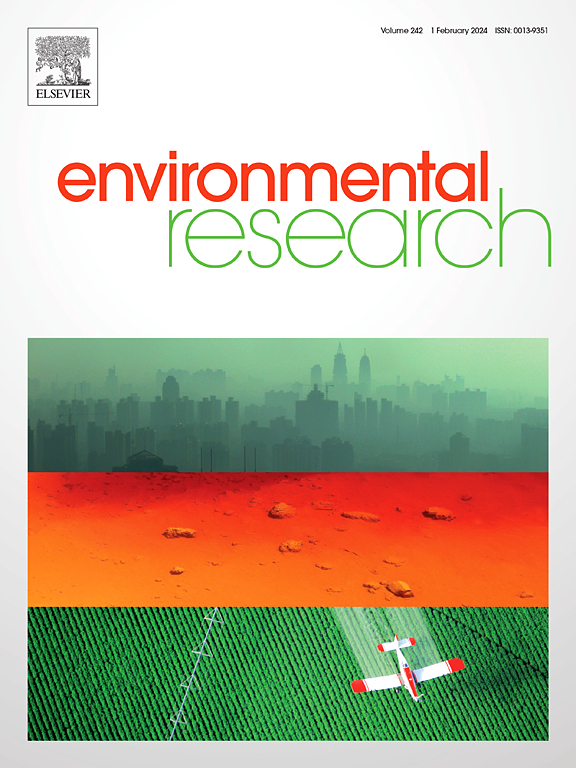CuO/Cu(OH)2@g-C3N4 derived from CuBTC/g-C3N4 for two channel photocatalytic hydrogen peroxide production
IF 7.7
2区 环境科学与生态学
Q1 ENVIRONMENTAL SCIENCES
引用次数: 0
Abstract
Photocatalytic production of H2O2 is indeed a safe, sustainable and cost-effective technology, offering an environmentally friendly solution to the energy crisis through solar photocatalysis. However, it still faces challenges such as reliance on organic electron donors and pure O2, as well as inefficiencies in hole utilization. To overcome these limitations, a dual-channel photocatalytic system has been developed. In this study, we showcase the efficiency of the CuO/Cu(OH)2@g-C3N4 composite, derived from CuBTC/g-C3N4 via NaOH treatment, as a high-performance dual-channel photocatalyst for H2O2 production. Under visible light (λ ≥ 420 nm), this composite achieves a H2O2 yield of 1354 μmol/L in 120 min without any sacrificial agent, outperforming g-C3N4 by 8.4 times, CuO by 13.6 times and CuO@g-C3N4 by 1.9 times. Quenching experiments and electron paramagnetic resonance spectra confirmed that HO• and O2•− are intermediate products in the photocatalytic process, following a two-step single-electron reaction pathway. The superior activity of CuO/Cu(OH)2@g-C3N4 in H2O2 generation can be attributed to the synergistic effects of OH bonds on the CuO@g-C3N4 Z-type heterojunction and Cu(OH)2. This research presents a straightforward and promising approach for developing highly efficient photocatalysts for energy conversion.
由 CuBTC/g-C3N4 衍生的 CuO/Cu(OH)2@g-C3N4 用于双通道光催化生产过氧化氢。
光催化生产 H2O2 确实是一种安全、可持续和具有成本效益的技术,通过太阳能光催化技术为能源危机提供了一种环保的解决方案。然而,它仍然面临着一些挑战,如对有机电子供体和纯净 O2 的依赖,以及空穴利用效率低等。为了克服这些限制,我们开发了一种双通道光催化系统。在本研究中,我们展示了 CuO/Cu(OH)2@g-C3N4 复合材料作为高性能双通道光催化剂生产 H2O2 的效率。在可见光(λ ≥ 420 nm)条件下,该复合材料在 120 分钟内实现了 1354 μmol/L 的 H2O2 产率,无需任何牺牲剂,其性能分别是 g-C3N4 的 8.4 倍、CuO 的 13.6 倍和 CuO@g-C3N4 的 1.9 倍。淬灭实验和电子顺磁共振光谱证实,HO- 和 O2-是光催化过程的中间产物,遵循两步单电子反应途径。CuO/Cu(OH)2@g-C3N4 在生成 H2O2 方面的卓越活性可归因于 CuO@g-C3N4 Z 型异质结和 Cu(OH)2 上的 OH 键的协同效应。这项研究为开发用于能量转换的高效光催化剂提供了一种直接而有前景的方法。
本文章由计算机程序翻译,如有差异,请以英文原文为准。
求助全文
约1分钟内获得全文
求助全文
来源期刊

Environmental Research
环境科学-公共卫生、环境卫生与职业卫生
CiteScore
12.60
自引率
8.40%
发文量
2480
审稿时长
4.7 months
期刊介绍:
The Environmental Research journal presents a broad range of interdisciplinary research, focused on addressing worldwide environmental concerns and featuring innovative findings. Our publication strives to explore relevant anthropogenic issues across various environmental sectors, showcasing practical applications in real-life settings.
 求助内容:
求助内容: 应助结果提醒方式:
应助结果提醒方式:


